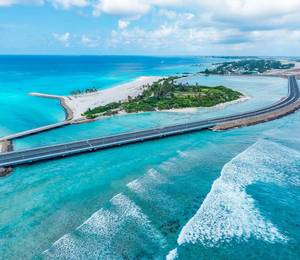Qingdao Conson Development, a Chinese state-owned capital investment and operations entity, recently held a ceremony to mark the commencement of its second Jiaozhou Bay Tunnel project. Featuring 15.89 km long, it is said to be the longest subsea road tunnel in the world.
“The second Jiaozhou Bay subsea tunnel will optimise the city’s urban structure and strengthen the connection between the east and the west, enabling both sides of the strait to flourish and alleviating traffic congestion,” said Wang Jianhui, chairman of Qingdao Conson Development. “With a high standard of design, construction quality, and management efficiency, Qingdao Conson Development is excited to contribute to the emergence of Qingdao as an open, modern, dynamic, fashionable, and international city.”
Qingdao Conson Development revealed that it began preliminary research on the second Jiaozhou Bay subsea tunnel in 2012, engaging China's leading experts, including academician Qian Qihu. In total, four pre-feasibility and 15 feasibility studies were conducted. Now, the company has begun construction work on what is believed to be the world's longest subsea road tunnel. The commencement ceremony was held on 29 October 2020, but there is no statement yet regarding the completion date of the project.
The project leverages international cooperation and innovation to propel tunnel design and construction into a new era, according to Qingdao Conson Development. “By overcoming challenges such as tunnel ventilation, disaster prevention, super-high water pressure, passage through large-scale fractures, and large-scale diameter shield docking in the drill-and-blast method, it is a historic achievement and major feat, making China a leader in tunnel engineering,” said the company.
The tunnel will begin at Huaihe East Road in West Coast New District, stretching alongside Liugongdao Road and passing under Jiaozhou Bay before landing at Qingdao Port, and connect East Coast, effectively linking Qingdao’s coastal urban areas. Measuring 15.89 km long with six two-way lanes, it is longer than Norway's Ryfylke Tunnel (14.3 km). The earth and stone excavated are expected to top 8 mil cu m, exceeding Japan's Seikan Tunnel (5.2 mil cu m) and Europe’s Channel Tunnel (4.8 mil cu m).
Qingdao Conson Development further highlighted the importance of the project. It is part of China’s ongoing construction of large-scale urban infrastructure transportation facilities, supporting its economic development. The second Jiaozhou Bay subsea tunnel is also expected to serve as an international benchmark in tunnel design, construction, and operations for the next decade, paving the way for future sea tunnels in China and around the world.
In addition, the project is aimed to promote the development of Jiaozhou Bay, enhance the overall competitiveness of the Jiaodong Peninsula, and establish Qingdao as a world-class coastal city on the One Belt, One Road's Maritime Silk Road.












